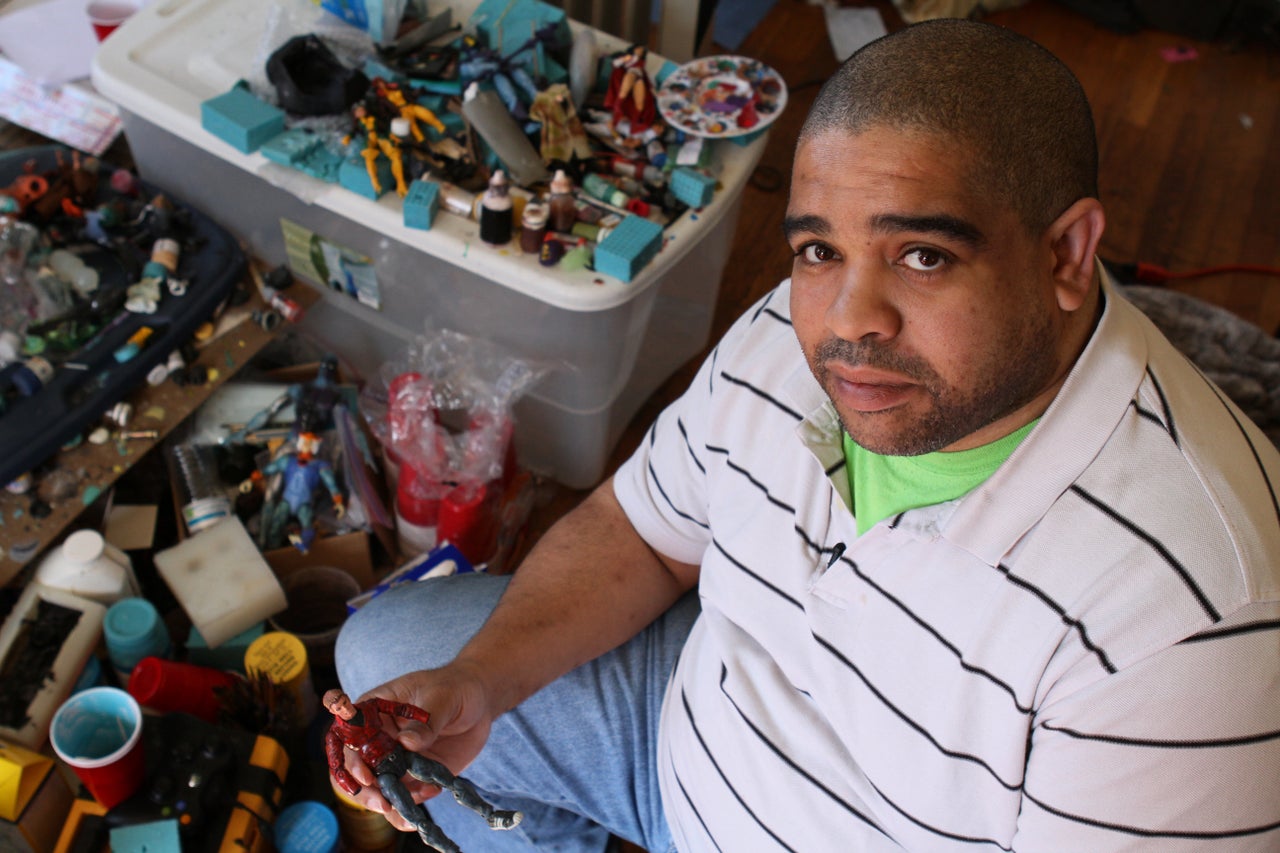GOOCHLAND COUNTY, Virginia — Ever since Curtis Brown Jr. got his first Star Wars toy as a toddler, he has been fascinated by action figures. So much so that he has built a business customizing action figures for clients worldwide. But what could be a lucrative career has turned into an exercise in futility that traps Brown and his family in poverty.
That’s because Brown struggles every day with miserable Internet service. The only choice where he currently lives is an $80-a-month satellite connection. It’s slow and comes with such a low data cap that he exceeds it within a week or two. So Brown’s business comes to a halt. He can’t afford to buy more data. He can’t use his smartphone because the service is so bad he has to go outside to get a signal, and it’s too cumbersome to update the many websites he uses to conduct his business.
The constant interruptions limit Brown to about $400 a month in profit. Even with his wife Ashley’s income from an administrative job with the state's education department, Brown and his three stepchildren have to rely on help from relatives and food stamps to make ends meet. Brown would move if he could, but houses with fast Internet connections are in areas where the rent is too expensive.
An isolated case? Not at all. An investigation by the Center for Public Integrity found that even though Internet access has improved in recent years, families in poor areas are almost five times more likely not to have access to high-speed broadband than the most affluent American households. That means no access to online jobs, and no access to health care advice, education, government services and banking — everything needed to be a full participant in today’s society. This harsh reality has led to a new kind of segregation.
“Internet access,” says James Lane, superintendent of Goochland County Public Schools, “is the civil rights issue of our time.”
A Rope Ladder
Brown sells his custom action figures — Gamorrean Guards, Luke Skywalkers and Skeletors — out of his living room in a compact one-story brick house at the end of a dirt driveway just off Stokes Station Road in the western part of Goochland County. The neighborhood is about 20 miles west of the tony suburbs and manicured golf courses adjacent to Richmond — but it is worlds away. Next door to the Browns: an abandoned trailer home with broken windows and rusted siding.
Nearly every house in the area has a satellite dish bolted on the roof or perched on a pole in the yard. A satellite connection, like the one Brown gets from HughesNet, is the only option for Internet here. But it is expensive and doesnot provide what the federal government defines as “advanced telecommunications capability” or high-speed broadband, a download speed of 25 megabits per second or higher. That’s the speed both the feds and application developers say is the minimum needed to support both the numerous devices in a household today and the future applications that will create digitally interconnected homes and businesses.
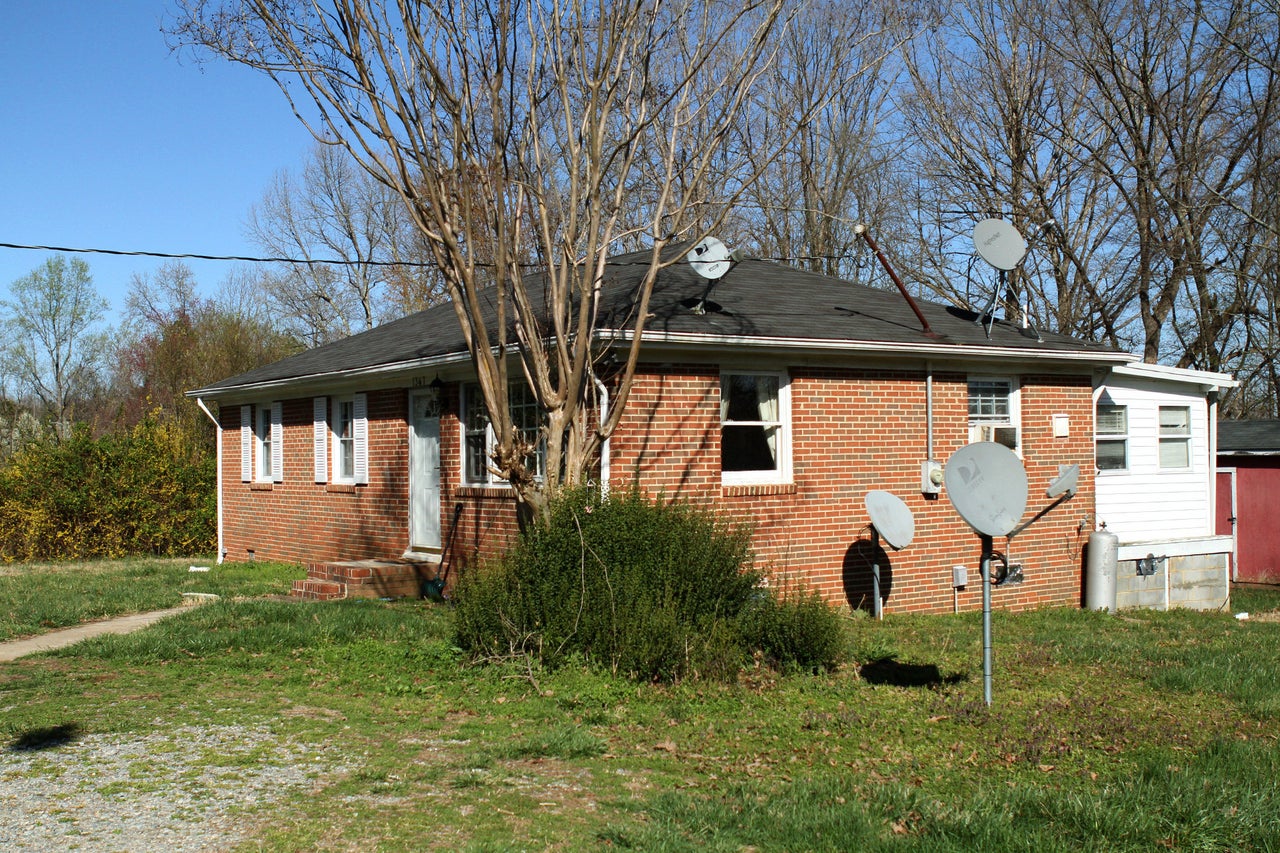
Other Internet connections like DSL — offered by companies such as AT&T Inc., CenturyLink Inc. and Verizon Communications Inc. — rely on telephone lines but typically don’t offer broadband speeds. Americans can get Internet on their smart phones, but the faster connections on those phones aren’t widely available and come with data caps that most people use up quickly. Cable and fiber connections, those offered by Comcast Corp., Time Warner Cable Inc. and Verizon’s fiber-optic cable service mostly in cities, offer the faster speeds. But they aren’t available everywhere either — especially in low-income areas.
It’s that sort of fast cable or fiber connection that Brown says he needs to earn thousands of dollars more a month like he used to when he lived in another part of the county that had a fast connection —before a family matter caused financial difficulties and he had to move.
“It would be like when you are in a hole, it would be that nice rope ladder being lowered down to you so you can get yourself out,” Brown said. “That’s exactly what it would feel like for us.”
For now, though, that ladder lies just out of reach, less than five miles away on River Road, one of the main thoroughfares that roughly follows the James River, which flows east to and through Richmond. That’s where Comcast, the high-speed broadband provider for much of Goochland County, ends its high-speed Internet service. It also happens to be almost exactly where the median household income drops by more than a third and the poverty rate triples, according to the Center’s analysis.
That’s not the only place Comcast ends service at the doorstep of this low-income area. The same happens on Riddles Bridges Road just another two miles away. And again farther north on Forest Grove Road, where Comcast serves neighborhoods with $300,000-plus homes: service stops a few thousand feet before the line where poor neighborhoods start — such as a low-income black community a little more than a mile away. Here Internet access “is nonexistent,” said a young resident who declined to give his name. “It’s primitive out here.”
Internet providers say they don’t consider demographic data such as income levels and poverty rates when deciding where to hook up neighborhoods. Who gets a wired Internet connection and who doesn’t is one mostly based on population density, they say. Areas like where the Browns live are too sparsely populated for telecommunications companies to make a return on the high cost of wiring rural neighborhoods, they say. Comcast officials add that they are following a specific franchise agreement the company negotiated with Goochland County officials, which requires them to lay cable down streets only where there are 30 houses per mile.
Even so, it’s hard for Manuel Alvarez, a county supervisor who represents the district where the Browns live, to look at where Internet service ends and not wonder if Comcast purposefully avoids providing broadband to Goochland County’s poor.
“I can't believe that they wouldn't look at people's ability to pay before they run cable,” said Alvarez, who won a seat on the board in 2011 running on a platform to improve Internet access countywide. “I do believe that they run cable where they will get their money back.”
Not Even a Choice
Nationwide, families in neighborhoods with median household incomes below $34,800 — the lowest fifth of neighborhoods nationally — are five times more likely not to have access to broadband than households in areas with a median income above $80,700 — the top fifth, according to a Center for Public Integrity investigation. The Center, which analyzed Federal Communications Commission and Census Bureau data, specifically looked at households that didn’t have access to wired broadband, which is fast Internet service that is readily available, as opposed to adoption, when a household has access to service and can choose to purchase it or not.
In Houston, high-speed Internet service becomes patchy between Interstate-69 and the Westpark Tollway, skipping clusters of apartment complexes where the median household income is less than $30,000 a year. Wealthier neighborhoods to the north, south and west enjoy more consistent coverage. Low-income residents in an area in East Cleveland don’t have access while wealthy areas just two miles away to the south do, according to the Center’s analysis. And in San Bernardino, California, people living in areas that have the lowest fifth of household income are about three times as likely to not have access to broadband as families living in areas where the household income is in the top fifth.
In all, in excess of 30 million Americans, more than half in areas with a median household income below $47,000 a year, do not have access to broadband, according to the Center’s analysis. That means difficulty streaming video or downloading or posting large files such as graphics and photographs, as Brown experiences. If more than one person in a household is online, interruptions can occur. And these families won’t be able to take advantage of future applications, such as home health care apps, that may require fast speeds to work properly.
““Internet access is the civil rights issue of our time.””
- James Lane, superintendent of Goochland County Public Schools
The Center’s findings closely match the FCC’s conclusion in its Broadband Progress Report, released in January. (The Center used more recent data that was released after the agency published its findings.) The FCC’s report was the basis for a commission ruling the same month that Internet providers weren’t deploying broadband in a reasonable and timely fashion, as required by law, opening up the possibility the agency may impose regulations to require providers to upgrade and expand their networks faster.
Compounding Difficulties
Many broadband experts and analysts say the real explanation for the difference in Internet access between the rich and poor is that providers can’t afford to wire rural areas, which have a larger proportion of low-income families than urban areas. Wiring rural areas is expensive, and providers can’t get enough return on investment because there are too few households to support the cost. Low-income households also tend to sign up for Internet service at less than half the rate of wealthier families, with the high cost of broadband connections the primary deterrent, according to the Pew Research Center. The providers are businesses, after all, goes the argument, and those businesses have the right to make money, and choose where to do business based on whether they can make a profit there or not. Last year, Comcast earned almost $12 billion in net operating income on its cable communications business.
The Center found that even controlling for population density, the rural poor are still in excess of one-and-a-half times as likely not to have high-speed broadband as rural wealthy families. Even in urban areas where 94 percent of households have access, low-income families are three times as likely not to have access as the wealthiest urban families, the Center found.
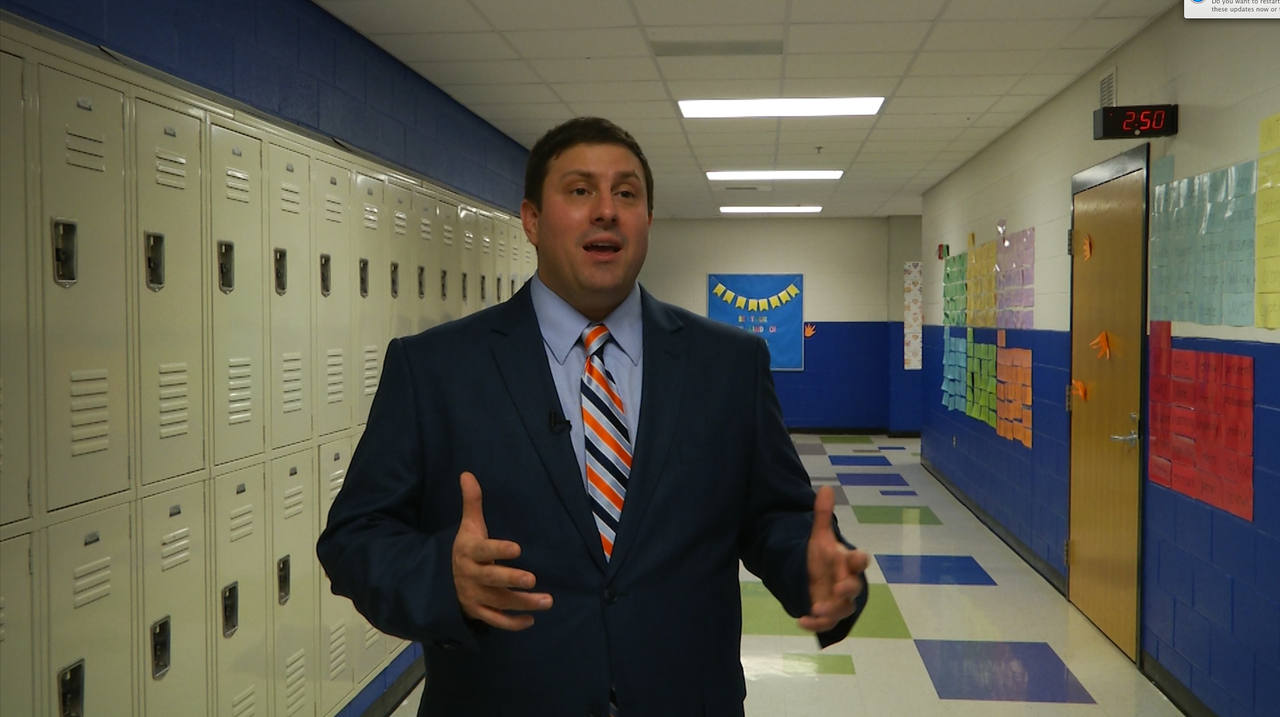
Tanisha Fletcher is one of the nearly 7 percent of city residents who don’t have access. Fletcher, 36, is a resident of Juniper Gardens, one of the oldest public housing projects in Kansas City, Kansas. Time Warner Cable provides service for the buildings all around her block, but not for her apartment building, according to the FCC broadband database. Fletcher, 36, has to rely on a wireless connection that she said freezes so often that “it might as well be non-existent.”
Even though Fletcher earns just $1,100 a month as the office manager at Connecting for Good, a nonprofit that works with Internet providers to connect low-income areas, she said she would be willing to pay $20 or more a month for a connection so she could finish her college degree and stay in touch with family and friends.
“We kind of get looked over here, and I don’t really know why that it is,” Fletcher said. “It makes us feel like the cable company and the city just don’t care about us.”
Time Warner Cable did not respond to a request for comment.
The FCC maintains that disproportionate access between low- and high-income Americans is a top concern. The FCC said policies directed toward improving access in rural areas, like its rural healthcare fund, and a fund to connect schools and libraries are aimed at reducing the wealthy-poor divide. The FCC additionally says it imposes conditions in mergers between telecommunications companies that typically require a purchasing company to provide better access to the poor, such as with AT&T’s purchase of satellite provider DirectTV last year. And the FCC also has acted to reduce barriers to broadband expansion into unserved areas, as it did in preempting two state laws that prevented cities from expanding municipal-owned Internet networks, arguing the statutes limited broadband’s reach to rural areas and the poor.
““A lot of people say, well life is unfair, but I feel like there's a difference between unfair and the necessity of it.””
- Crystal Ware, mother of a fifth grader who doesn’t have Internet access at home
But not explicitly focusing on the digital divide between the wealthy and the poor can have significant adverse circumstances, said Sharon Strover, director of the Technology and Information Policy Institute at the University of Texas at Austin, who studies broadband’s impact on economic growth. .
In a 2013 study, Strover and her co-authors found that poverty rates in areas with a high-speed connection were significantly lower than those that didn’t have broadband. Median incomes also were higher in counties where adoption rates were above average.
“I think some of the difficulties that lower-income folks have now will just be compounded” if they don’t have access to high-speed broadband, Strover said.
The Digital Dividing Line
In Goochland, county leaders and residents are well aware that broadband access ends at the same place where incomes drop, and the poverty rate and percentage of minorities increase.
The wealthy area starts in the eastern part of the county, which abuts some of the most luxurious Richmond suburbs, where the median income is above $100,000 a year. Million dollar-plus estates with waterfront views sit close by to the exclusive private Kinloch Golf Club, with its Tudor-style clubhouse. Capital One Financial Corp., the eighth-largest U.S. bank, operates a sprawling 316-acre business campusabout a five-minute drive away. Residents here have a choice of buying Internet service from Comcast or Verizon, with speeds reaching as high as 500 Mbps, among some of the fastest available nationwide.
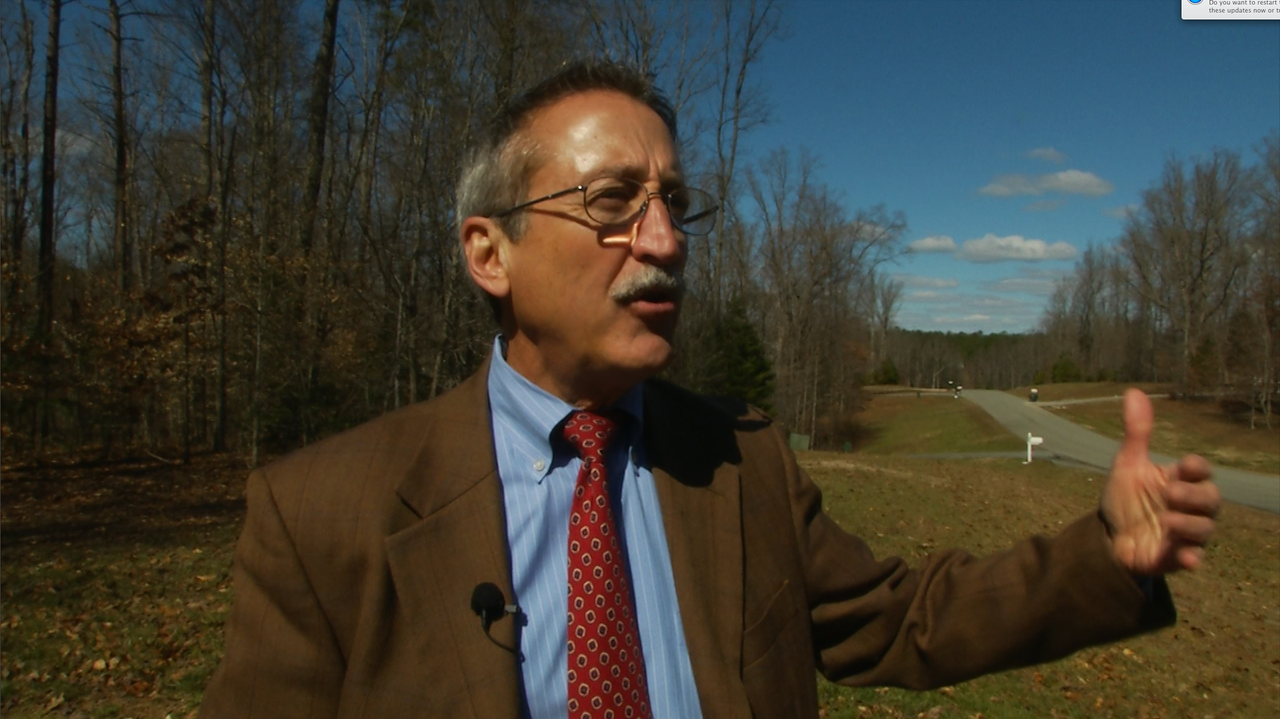
But travel west and cross the halfway point of the county — past the recently built Goochland High School and just beyond Dogtown Road — and broadband mostly stops. No longer can you get Comcast’s fastest connection of 150 Mbps, and Verizon’s fastest speed drops from the 500 Mbps in the east to a sluggish 3 Mbps, to eventually no service at all. For sure, the county is more rural here, making it more costly for providers to lay cable or fiber, acknowledges Lane, the school superintendent.
At the same time, he says, “We know that in our community the fiber stops right at the moment where our low-income students are living.”
And the effects, he says, are profound. Three years ago, the school system began giving a laptop or iPad to each student. Teachers incorporate the devices into classroom exercises; in one recent class students searched the Internet to find requirements for their chosen careers. Teachers also would like to assign homework that requires accessing online resources when students leave school. But because many students have no broadband at home, the school has implemented a rule that teachers can’t assign homework that depends on the Internet. Even so, students without Internet are falling behind, Lane said.
“The kids who have access are learning anytime, anywhere they want to,” said Lane, who will become the superintendent of schools for neighboring Chesterfield County in July. “But the kids who don't have access at home, basically their learning stops at the moment they leave the school house.”
Like Cody Ware. A 12-year-old fifth-grader at Goochland’s Byrd Elementary School who likes science, Cody said the lack of Internet makes him nervous because he is afraid he may miss an assignment. “If I forget to take a picture of my homework on the iPad, then I can't do it on the iPad later that night because I don't have it,” he said. “And then I have to explain to my teachers why I didn't have it.”
Cody’s mother, Crystal, 38, said the family can’t afford to move to the part of the county with broadband access, even though it’s just a couple miles away. She recently had to make the hour-long, round-trip drive to the closest library so her son could download a study guide for an upcoming science test.
“A lot of people say, well life is unfair, but I feel like there's a difference between unfair and the necessity of it,” Ware said.
‘Bent on Regulating’
The FCC has the authority to determine if providers are deploying Internet service in a “reasonable and timely fashion,” as outlined in the 1996 Telecommunications Act. When the agency sees barriers to deployment, it has argued it can act in the public interest, as it did when it preempted the state laws barring cities from expanding their networks.
But the market for Internet service remains close to a monopoly in many places, and at best a duopoly in most areas. About 75 percent Americans have only one or two choices for providers, according to the FCC. And many providers tend to avoid competition that could lead to expansion of the networks, according to an earlier Center investigation.
When the FCC ruled that broadband wasn’t being deployed fast enough, it reported that “deployment, competition, and adoption [are] concepts that we continue to recognize are tightly linked.” But Internet providers such as AT&T and Verizon argued the opposite. They said the FCC’s own reporting showed the percentage of Americans without wired broadband access dropped from 28 percent in 2011 to 10 percent in 2014.
AT&T said in a filing that the FCC was “ignoring that this percentage was declining rapidly.” Commissioner Michael O’Rielly, one of two Republicans on the five-member commission, voted against the FCC’s finding that broadband was not being deployed fast enough. He said the FCC’s report “continues to show steady progress in connecting unserved Americans” and that “apparently no amount of progress will ever be good enough for a Commission that is bent on regulating broadband at all cost.”
Verizon claimed in a filing that the FCC should include wireless access in its assessment of broadband access, arguing the failure to incorporate “all broadband options that are available to and used by consumers was a persistent flaw in methodology.”
But the FCC also ruled in January that satellite and wireless connections were not a substitute for wired connections.
And back in Goochland County, most folks seem to agree. Superintendent Lane called O’Rielly’s assertion “ridiculous” and said Verizon’s claim that wireless should be considered in the broadband-access calculations isn’t feasible.
“Do you think that you could do your entire job on your cell phone?” asked Lane. “Because I can tell you that most people would say that you cannot.”
““We want to service as many people as possible.””
- Comcast Corp. official
Comcast officials said they do not use Census Bureau income or poverty data to determine where the company lays cable. Comcast conducts periodic surveys of the county to check where they need to provide service. Officials also said the company’s program to provide low-cost Internet connections is aimed at increasing adoption, although it doesn’t improve access to broadband. By serving urban areas, “arguably we provide service to more families in poverty or near poverty,” a Comcast official said. “We want to service as many people as possible.”
In Goochland County, similar to other areas, the company is obligated to follow a franchise agreement it negotiated with the county in 2011. These agreements, which number in the thousands nationwide, are typically renegotiated every several years. In Goochland County, that is a time when residents fill up the room where the board of supervisors meet to complain about lack of service, Alvarez said, but local boards typically don’t have a lot of power to negotiate expanded service into areas that are high-cost, which frequently also means low-income.
AT&T and Verizon, as well as Time Warner Cable, CenturyLink and Charter Communications Inc., didn’t respond to requests for comment. A spokesman for Cox Communications Inc., which provides service in more than a dozen states from Rhode Island to California, said in an email that “100% of the residents in the markets we serve have access to Internet service if they choose it” and that the company follows agreements negotiated with local governments.
The Cost of Access
In many areas where Comcast runs cable, residents don’t have broadband access. Under its agreement, Comcast isn’t obligated to run a line from the street down a homeowner’s or renter’s driveway if the house sits more than 150 feet off the road.
The provision keeps even wealthier Goochland residents from getting connected. When Alvarez, the county supervisor, moved in 2004 to a Goochland neighborhood where many of the homes are valued at more than $500,000, he didn’t have fixed Internet, even though a cable ran down the road a few hundred feet from his driveway in the Mill Forest subdivision. Alvarez said local Comcast officials told him it would cost $2,300 to run a cable to his house and $250,000 to wire the entire neighborhood of more than 120 homes. Eventually, Comcast came down to $47,000 for the subdivision, or about $450 a house, Alvarez said. Most of the neighborhood residents paid the fee to get connected.
Alvarez, whose district he says includes “houses with dirt floors to houses with marble floors,” said Comcast and other providers should pay to connect homes where lines are readily available because the companies will eventually recoup their costs. He says the lack of Internet is also hurting job growth in the western part of the county, as businesses can’t get the fast speeds needed to compete in the modern economy.
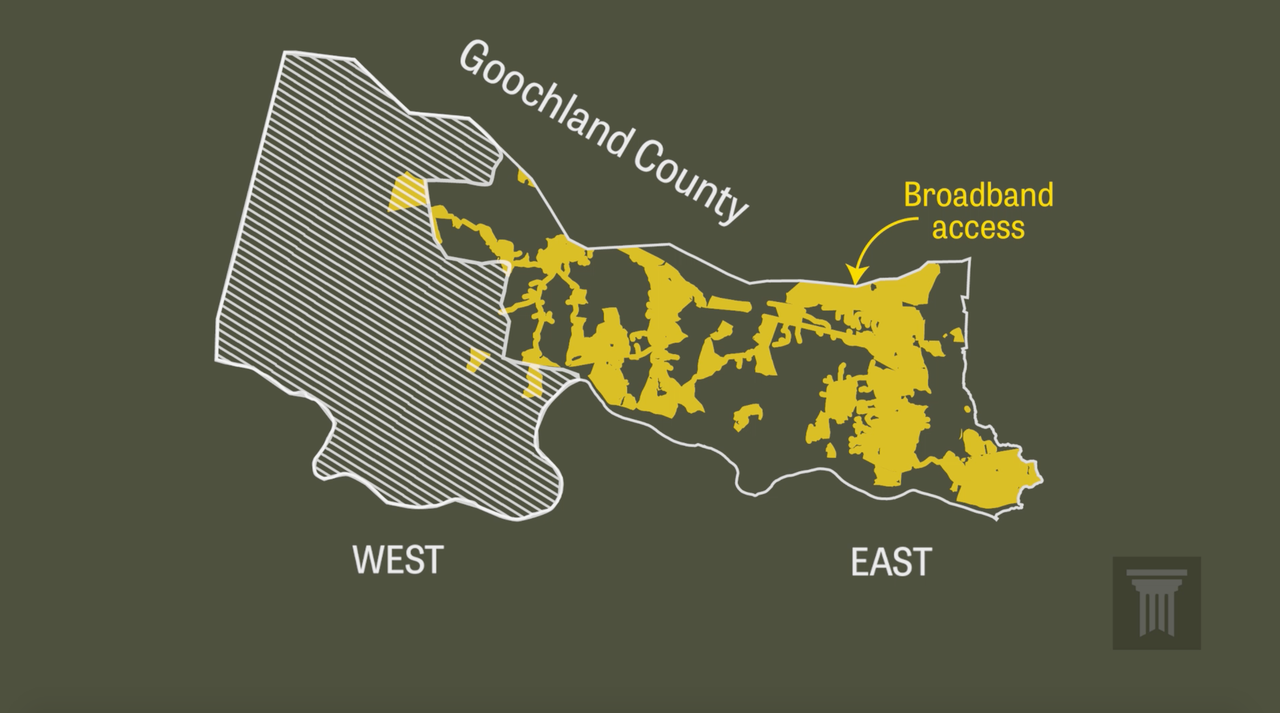
What it all means, Alvarez asserts, is that high-speed Internet is really a “must have” in today’s world, not a luxury. The Internet is becoming a utility that is as much of a necessity as electricity, and that means the federal government may have to regulate it as one, he said.
“Then you can push for more coverage,” Alvarez said. Otherwise, he says, “Everybody who doesn't have high-speed Internet is going to fall behind.”
A Lifeline?
Last month the FCC passed reforms to a program that officials said should encourage providers to expand broadband to low-income areas. In a party-line vote, the agency voted 3-2 to expand the Lifeline program, which previously had subsidized the cost of cell phones for low-income individuals, to include fixed Internet service. Eligible participants can receive a $9.25 a month discount off their fixed broadband bill, paid for by the FCC. Officials hope the $2.25 billion program, funded by the existing universal service tax on customers’ Internet bills, will create a market in poor areas that Internet providers will want to reach.
FCC officials note that the agency’s $4 billion-a-year “high-cost” universal service program also includes subsidies to encourage wiring areas underserved by providers. The $1.7 billion Connect America Fund requires providers who accept money to offer a speed of at least 10 Mbps download as well as follow other requirements. But not all providers have accepted the cash. Verizon was offered $29 million in federal funds to expand service in Virginia, including about $265,000 in Goochland, but it didn’t take the money, according to the FCC. Other providers did, such as CenturyLink. Verizon didn’t respond to requests for comment.
““I can't believe that they wouldn't look at people's ability to pay before they run cable.””
- Manuel Alvarez, member of Goochland County’s Board of Supervisors
But some are skeptical of how much these programs will help. It is unlikely Lifeline will provide a big enough incentive to providers to upgrade networks or to expand wired service to poor areas.
Lifeline’s individual subsidy “is unlikely to make a dent in the under-supply of broadband in sparsely populated rural areas,” said Richard Bennett, who studies technology policy at the American Enterprise Institute, in an email. “Solutions to the extreme rural coverage dilemma are more likely to come from advances in technology and investment by public-private partnerships to bring new technologies … to market.”
Bennett said wireless broadband companies such as Bluebird Broadband, which offers service with no data caps, are likely one option for low-income households going forward. Bluebird Broadband, which services Northwest Louisiana and neighboring parts of Texas, offers a 20 Mbps package for about $89 a month, including a $9 router rental fee. That’s still more costly than most wired connections with faster speeds.
In Virginia, Last Mile Broadband LLC has begun to deploy an advanced wireless LTE technology to serve portions of Hanover County, just north of Goochland, that it says is faster and more reliable than current wireless technology. The company plans to cover Goochland County by the end of 2017. The company will offer speeds of 10 Mbps at about $80 a month, after a $199 fee to install equipment on a customer’s home, without any data caps.
“We’re going where no other company serves,” said Keith McMichael, Last Mile’s chief operating officer, who grew up in the area. “We’re trying to solve everyone’s problem. Low income or high income, everyone gets it the same way.”
But the cost may still be out of reach for low-income families, and the service doesn’t include TV or phone, requiring families to pay for a TV or satellite package with another company. Most providers that offer a wired broadband connection of 25 Mbps or more charge less per month and include phone and TV. Besides, the wireless companies are still in startup mode and have yet to spend the money to expand coverage.
Back in Goochland, Brown, the toy maker, says he can’t wait much longer.
“Our kids need this,” Brown said. “If wealthy people have better access, they're going to have more opportunities, which will increase their potential for wealth. While if you are in poverty and you have reduced access, you're going to basically fall further behind.”
CORRECTION, May 12, 2016, 4:22 p.m.: An earlier version of this article identified Ashley Brown as working for the Goochland County department of education. She works for the Virginia Department of Education.
The Center for Public Integrity is a nonprofit, nonpartisan investigative reporting organization. Verizon is the parent company of AOL, which owns The Huffington Post.
